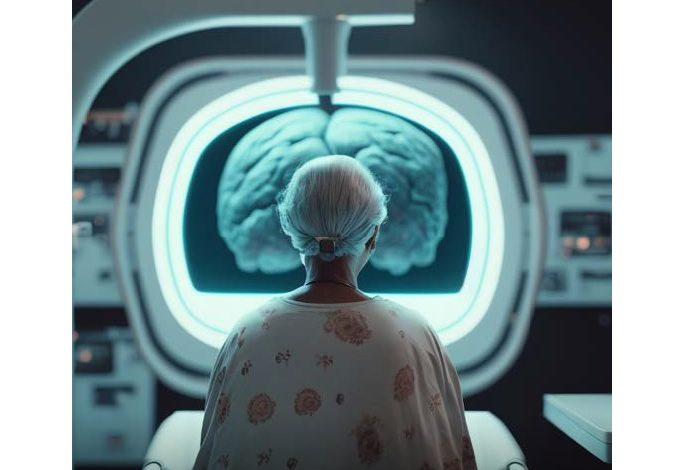The Rise of Precision Radiation for Cancer Care

Cancer today poses formidable health challenge with numbers galloping at an unfathomable rate. Radiotherapy has immense potential to improve clinical outcomes, enhance survival rates and reduce metastasis. While the outlook for the radiotherapy market seems promising, cancer care centres and public and private partnerships are working in collaboration to bridge the gaps and deficits in the accessibility to costeffective teletherapy.
By Sonali Patranabish
According to 2022-23 estimates of cancer’s global burden by the International Agency for Research on Cancer (IARC), globally, the agency estimated two crore new cancer cases and 97 lakh deaths, and about 5.3 crore people were alive within five years following a cancer diagnosis. To tide over the crisis, radiotherapy is touted to be a game changer.
Radiation therapy- The first line of treatment
Radiotherapy has emerged as a first line of treatment in more than 50 per cent of cancer cases due to the doubling rates of cancer cases added. Recently, Radiological Society of North America (RSNA) and four other radiology societies from around the world have issued a joint statement on the development and use of artificial intelligence (AI) tools in radiology. The multi society paper defines the potential practical problems and ethical issues surrounding the incorporation of AI into radiology practice. In addition to delineating the main points of concern that developers, regulators, and purchasers of AI tools should consider before their introduction into clinical practice.
Precision Radiation Oncology – A proactive approach
Precision medicine – a division of clinical practice has even been harnessed towards curing chronic diseases like cancer. AIIMS, Bhubaneswar has installed High Energy Linear Accelerator (HELA) machines. The machines will help oncologists identify cancer cells with pinpoint accuracy and expose the affected area to radiation. The HELA machine purchased for Rs 20 crore will be operated by state-of-theart technology. Moreover, the machine is equipped with its imaging system which can accurately track malignant tumours in difficult terrains like the brain, lungs, and liver.
American Oncology Institute (AOI) at Nangia Specialty Hospital introduced the Varian Halcyon E, the first-of-its-kind in the Vidarbha region, an advanced radiotherapy machine for comprehensive cancer care. The facility optimises image-guided radiotherapies such as cone-beam CT imaging within 17 seconds and helps speed up the treatment process.
“Radiation oncology plays a vital role in cancer management by delivering targeted radiation therapy to destroy cancer cells and shrink tumours. It is used as a primary treatment modality or in combination with surgery and chemotherapy to effectively treat various types of cancer and improve patient outcomes.”
Radiation therapy services – A cut above the rest
While radiation therapy has emerged as a preferred choice of treatment having both curative and palliative benefits for patients against early-stage cancers, external beam radiation therapy (EBRT) has emerged as a clear winner for deep-seated cancers in comparison to its counterparts Brachytherapy and Radioisotope therapy. The spectrum of cancers treatable and curable with EBRT has made this a popular choice for the treatment of this chronic disease.
Dr Amol Pawar, Radiation Oncologist at Onco Life Care Center, Chiplun said, “If we see the latest cancer registry data, India has a relatively young cancer population it witnesses approximately 14 to 15 lakh new cases every year with around 5 to 6 lakh deaths in India with nearly two-thirds of the cancer patients needing radiotherapy. These statistics point towards an increasing demand for radiotherapy services while signalling stakeholders to augment their facilities and resources to house radiotherapy equipment.”
According to Market Research Report, the current market size of radiation therapy is impressive and is expected to reach $250 million by 2030. Such tailored treatments and innovations have created a dynamic landscape for an otherwise fragmented cancer care ecosystem.
LINAC’s – The Machine with the Golden Arm
Linear accelerators (LINAC) are machines in demand that are endowed with the power of targeted precision and accuracy. The market is inundated with quite a few key players and brands like Varian Systems, Elekta, Accuray and Siemens and statistics go on to say that India has close to 700 commissioned LINAC systems in place, with 85 per cent in the private sector solely.
Recently Maharashtra’s Medical Education Department has approved a budget of Rs 38 crore to acquire a new linear accelerator.
Hyderabad-based Krishna Institute of Medical Sciences (KIMS) ordered $40 million from radiotherapy treatment solutions provider Elekta. The combination of solutions includes Elekta’s full suite of hardware and software, such as Elekta Unity MR-Linacs; Esprit (Elekta’s latest Leksell Gamma Knife) systems; Versa HD linear accelerators; Flexitron brachytherapy afterloaders; and Elekta One suite of oncology software solutions. The Elekta equipment will be deployed in a phased manner over three years across different KIMS hospitals.
Amrita Hospital Faridabad tied up with IIT Hyderabad to develop new technology in radiation therapy. Dr Bhaskar Viswanathan, HoD, Department of Radiation Oncology, Amrita Hospital, Faridabad, has been recently selected for a research grant, meant to develop an indigenous robotic ultrasound for tumour motion and radiation hyperthermia for cancer treatment. The technology would be developed in association with Dr Avinash Eranki, Assistant Professor, Department of Biomedical Engineering at the Medical Ultrasound Research Laboratory of Indian Institute of Technology – Hyderabad, Eranki Labs Private Limited, and Amrita Centre for Advanced Robotics.
Dr Viswanathan said, “It is a non-invasive technique that uses focussed ultrasound waves and has a huge potential in cancer treatment like tumour ablation, mild hyperthermia for radiotherapy and chemotherapy, and motion management during radiation delivery. The cutting-edge technology will allow precise localisation of lesions, enabling targeted and effective delivery of therapeutic radiation and avoiding damage to the surrounding tissue and organs.”
The National Cancer Institute (NCI) at AIIMS Jhajjar is set to launch a nuclear medicine therapy ward, with 21 beds, where various radioisotope therapies will be performed. It is slated to be one among the biggest such facilities in India. Dr Gairola throws light on the importance of the LINAC- which he considers as an integral element of radiation oncology. He mentions, “Linear accelerators are the workhorses of radiation oncology departments, delivering high-energy X-rays to precisely target and destroy cancer cells.”
Agreeing to him, Dr Pawar emphasises on the multiple benefits of using the LINAC machine as a treatment modality in cancer care. “In LINAC, there is no radioactive material used as a source of radiation. unlike Cobalt-60 teletherapy, the precision and accuracy of treatment are enhanced with the use of more advanced and modern techniques such as three-dimensional and intensity-modulated therapy, image-guided radiotherapy and volumetric arc therapy.
The risk of Radiotherapy to the normal organs of the body can be estimated accurately and ultimately helped in producing superior treatment plans,” opines Pawar.
High Demand
As per the Indian Journal of Cancer, India will need at least 5000 LINAC machines to be able to provide accessible and affordable palliative care to cancer patients. The Crux of Cancer Care – Circumventing Surmounting Challenges Precision radiation therapy is one transformative treatment that holds a lot of promise for millions across the country but stakeholders in the healthcare fraternity must be committed to ensuring accessibility to such effective solutions.
Beacon of hope
The integration of precision medicine and radiation oncology has brought about a quantum leap in multifaceted patient care. Innovations in radiation therapy and its power of precision have been a beacon of hope for the millions afflicted with this chronic disease. Radiation therapy is poised for a revolutionary change with path breaking technologies evolving and healthcare as an offshoot of mainstream medicine that is gaining traction given its consolidated and comprehensive approach to cancer care.




